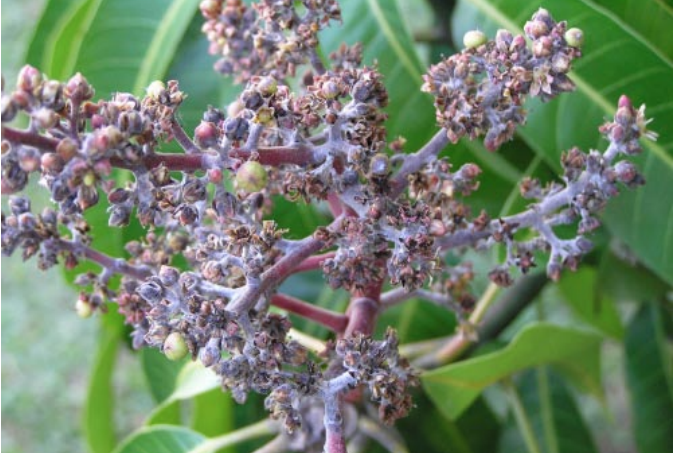Driving around the Treasure Coast, you should realize that there is an abundance of Mangoes. As an Extension agent with UF/IFAS Extension in St Lucie County, I have been asked questions such as: why my mango trees do not produce many fruits each year? Mango trees need to recuperate after each fruit-bearing season, therefore adequate nutrients must be present in the soil for the trees to be productive in the next bearing season. It is recommended to feed the trees with a 0-0-20 fertilizer. Fertilizers with nitrogen should not be applied to mature mango trees. Nitrogen will facilitate lush green foliage, and trees produce little or no fruits. Mango trees that are planted in a yard that is frequently fertilized, will pick up high Nitrogen lawn fertilizer and cause reduced production. Also, do not apply fertilizers that contain herbicides or insecticides close to mango trees.

Another common issue with mango trees is that trees will flower profusely and lose most of their flowers. This could be a result of powdery mildew or anthracnose disease. Treating flowering plants with a copper fungicide is recommended to protect the blooms. Trees that are too tall are easier to treat if you hire a landscaping company that can treat overhead.
Keeping the plant at most 6 to 8 feet tall is essential. This practice will make it easy for fruit picking and pruning. It’s also important to prune trees to allow air and sunlight to pass through. Fruits that receive adequate sunlight are sweeter than those that receive little or no sunlight.
Grafted mango trees may produce fruit in the first or second year after planting. If trees produce fruits while trees are small, removing fruits is recommended to allow trees to develop fully. The second or third year may be ideal for trees to keep the fruit, depending on the tree size. Trees planted from seeds may take up to five years to produce fruits. Mature trees may only require supplemental irrigation if there is an extreme drought.
Thanks Grantly Ricketts for writing this bllog. For more information, please read : Mango Growing in the Florida Home Landscape
Source: UF/IFAS Pest Alert
Note: All images and contents are the property of UF/IFAS.



